TEN OF THE BEST THINGS TO DO IN VERONA THAT HAVE NOTHING TO DO WITH ROMEO AND JULIET
Verona. The fair city of Verona, beloved by Shakespeare and immortalized as the location for the tragic tale of Romeo and Juliet. Subsequently, this has become the city’s main pull for visitors. The crowds will swarm through the dense side street to view Juliet’s balcony. Couples scrawl their love hearts on the wall. But honestly, there is far more to Verona than this.
Take a smaller scale version of Rome’s ancient history, Milan’s sense of high fashion, the terracotta roofs of Bologna and the gardens and sculptures associated with Florence and you get Verona. An ideal microcosm of some of Italy’s greatest cities.
As I can testify, Verona is blessed with a wealth of interesting things to see and do beyond the great Romeo and Juliet tourist traps! More than a few suggestions below that make me want to return in a heartbeat. I can also assure you will too. Here are just ten that immediately come to mind. And all far more interesting than looking at one balcony and posing by a bronze statue!
ARENA DI VERONA
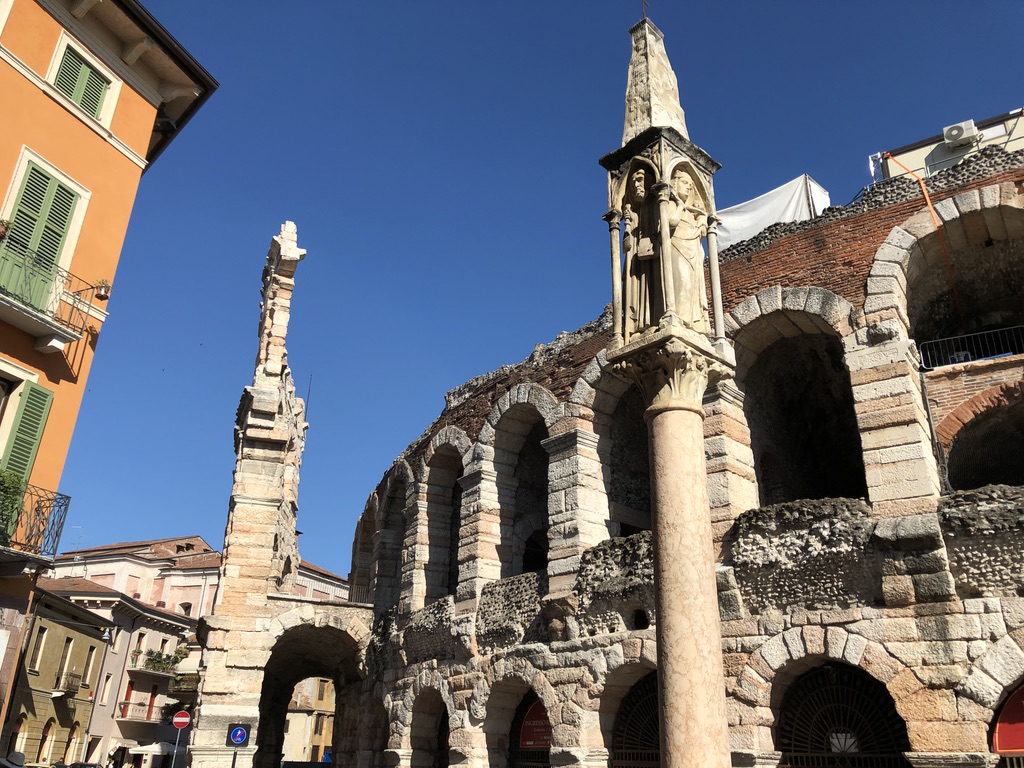
Still standing prominently in the Piazza Bra, every bit as imposing as it did two millennia ago, the Arena di Verona stands out prominently ahead of many other features in this city. Unmissable is an understatement! Second after Rome’s Coliseum in terms of largest Roman amphitheatre intact, the Arena remains a popular concert venue to this day.
Between the middle of June and middle of September is peak time for the world famous Opera festival. A ticket to a performance is a pilgrimage for opera lovers, to see the world’s largest festival of the genre. Likewise usually during the Spring and Autumn months it remains a popular concert venue acts for many big names on tour.
During the daytime, when there aren’t any performances taking place, you can get a ticket for a small group tour to have a look inside. A location for many an intense gladiator chariot race in the age of Caesar and another example of where the ancient meets the modern. An essential bucket list item for the classicists.
CASTELVECCHIO
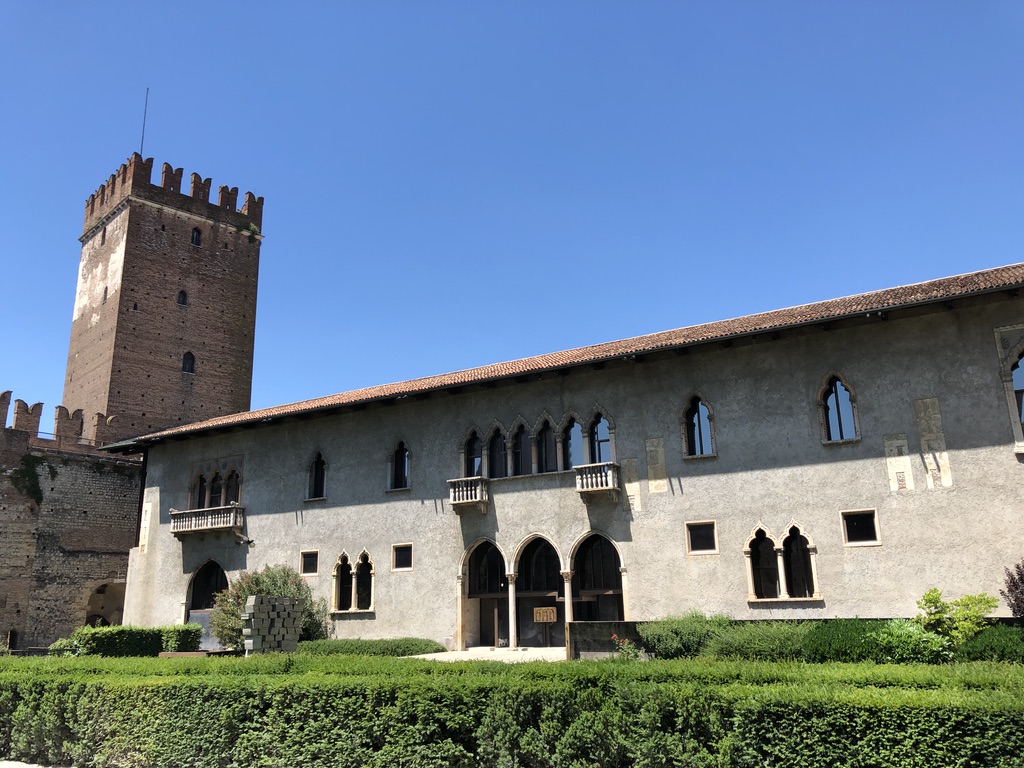
The fortress of the Scala dynasty that ruled Verona in the Middle Ages. This vivid redbrick structure of the Castelvecchio (Old Castle) does hark back to its Gothic design built by Cangrande II of Scala in 1359. Fascinating to examine the ramparts and also walk along the bridge with its serrated columns that stretches over the moat. Badly damaged during the Napoleonic Wars and became uninhabited but it was restored in the 1920s as a barracks before again suffering destruction near the end of WWII.
The Ponte Scaligerno (as the bridge is also known in homage to the Scaligeri) was soon reconstructed after the war along with the rest of the castle. An intense restoration project carried out by architect Carlo Scarpa between 1959 and 1973 successfully reimagined how Castelvecchio looked in its heyday. In addition some more modern touches were added such as the latticed doors that blend contemporary with historic.
Inside the museum there are many artefacts of note such as paintings and sculptures that took pride of place in the Romanesque period. Hailing back to the Scaliger’s power are also many ancient weapons on display.
Going inside the ancient castle, walking along the restored bridge over the Adige or around the ramparts is once again an opportunity to let your imagination wander. Where once the bridge withstood invaders is now a great spot for contemplation.
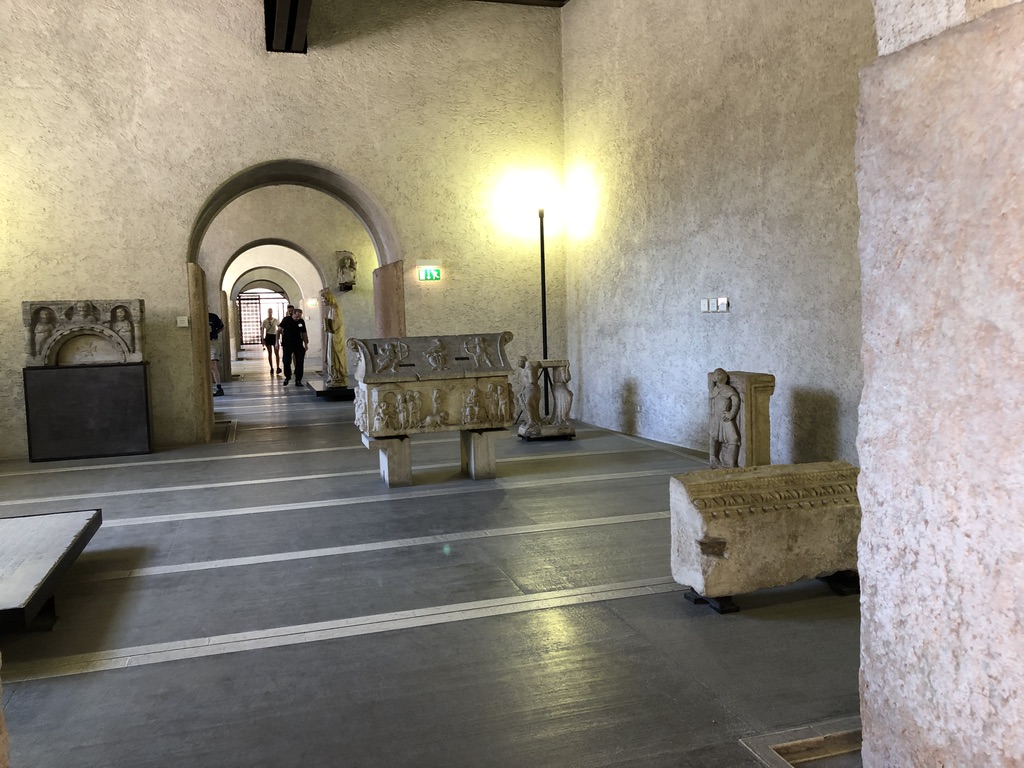
TRACE THE CITY’S ANCIENT HISTORY
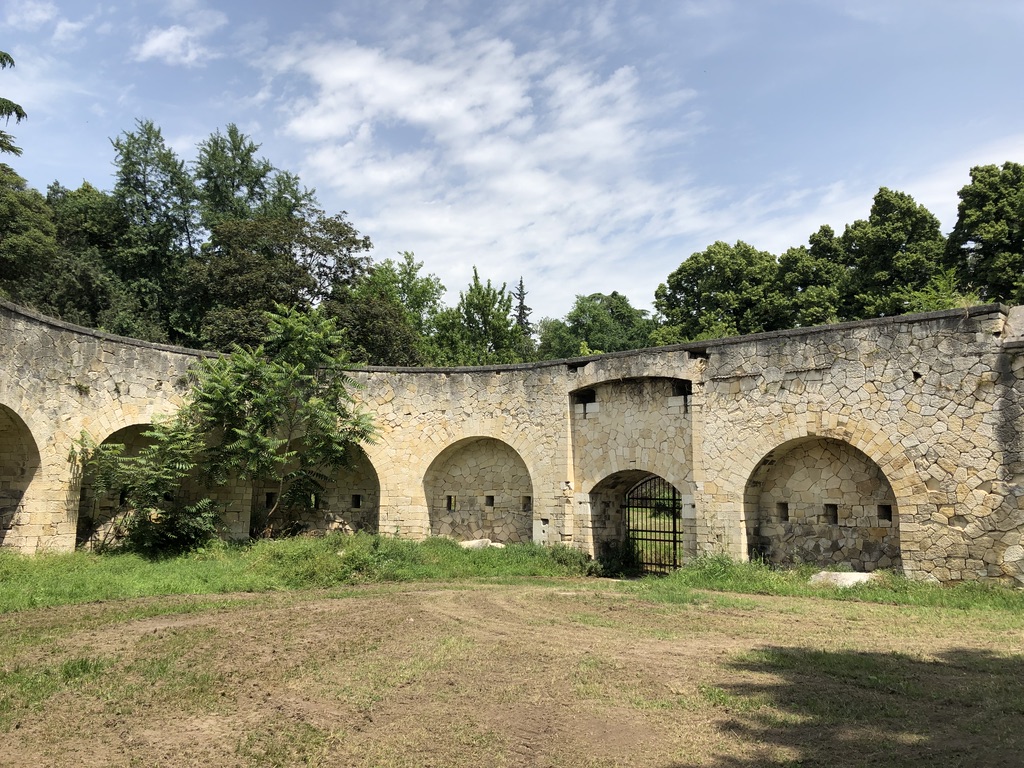
As well as the spectacular Arena, you will find so many traces of Ancient Roman history all over Verona. Of further mystery is the Parco delle Mura situated near the main train station (Porta Nuova). Debate rages as to what its purpose was when you examine the bare grassy mound today. It looks on first impression to be a part of the ancient city walls but today it can become an interesting point from which to view most of the city from afar.
On the other side of the Adige are the remains of an old roman theatre. Simply referred to as Teatro Romano this even predates the Arena di Verona. Occasionally used for outdoor entertainments in the summer months as well, it may not hold anything near the capacity of the main Arena but is still another fine location to imagine what Veronese life was like almost two millennia ago.
Also are two separate gates that mark the historical entrances in ancient time. The Porta Borsari dating back to the 1st Century AD is one of the most striking still looking almost like most classical historians interpretations. The limestone walls and two arches (did one represent entrance and the other exit?). You can still see hints of the Doric arches carved. Marking the historical entrance to the Piazza Bra is the Portoni della Bra. This standing very imposingly opposite the arena. The clock on the outside is another intriguing juxtaposition of ancient and modern. Or was there always a clock here dating back centuries?
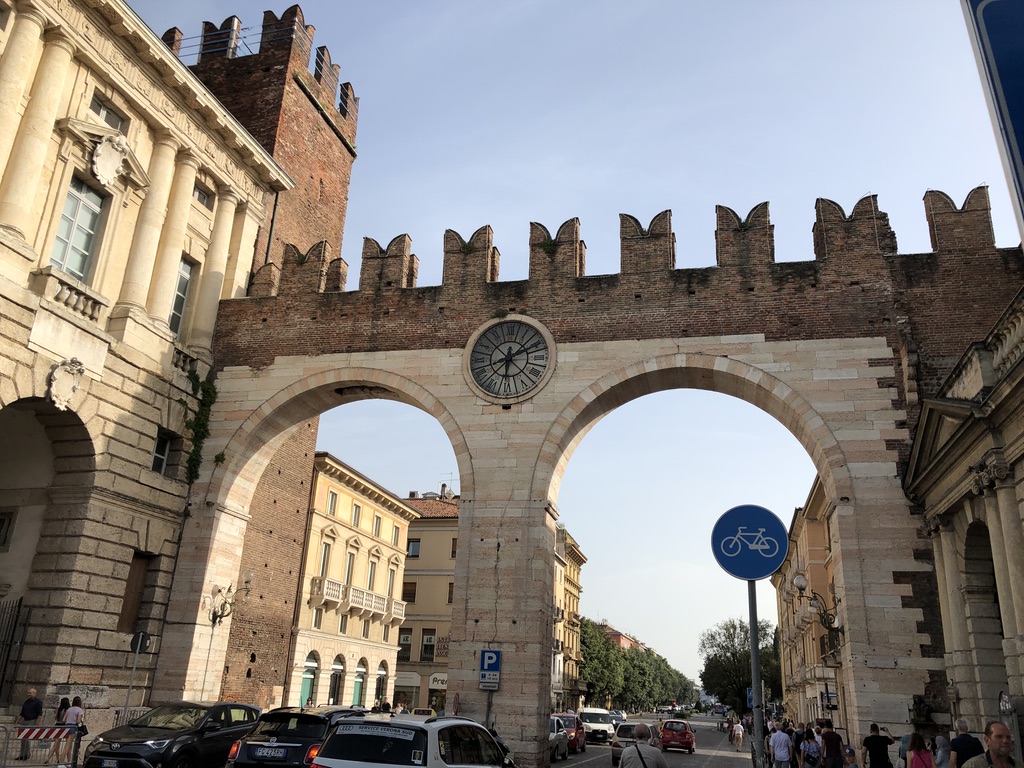
VIEWS FROM THE CASTEL SAN PIETRO
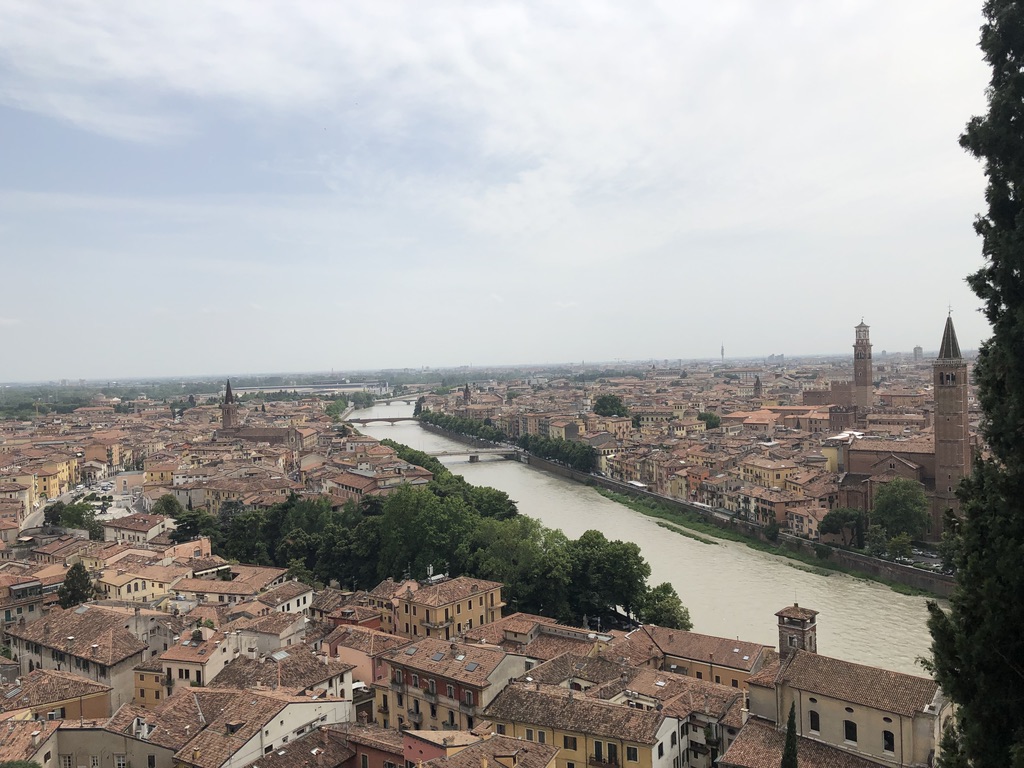
For perhaps the best vantage point of the city below, the location of the Castel San Pietro is exactly that. Formerly the residency of the Kings of Verona as far back as the 13th Century, it remained occupied until near destruction during the Napoleonic Wars. Reverting afterwards into a military barracks, this ancient castle has since been somewhat abandoned. Consequently this old palace is not open to the general public so unfortunately there are no historic treasures to unravel. What remained of it stands almost as a ruin. Yet it is the surrounding area that provides the finest spot for views over the Adige of the city stretching out far beyond the terracotta roof buildings.
You can reach by a funicular or by foot. From the alleyway directly opposite the Ponte Pietra, the steps are not too steep and there is a nice halfway vista to pause at before reaching the summit. Along this route it is an authentic experience to meander through the hidden passages and houses of Verona.
Or you can always take the funicular if it is too hot or you just aren’t feeling energetic! Seriously, however you roll, this is an essential Verona location.
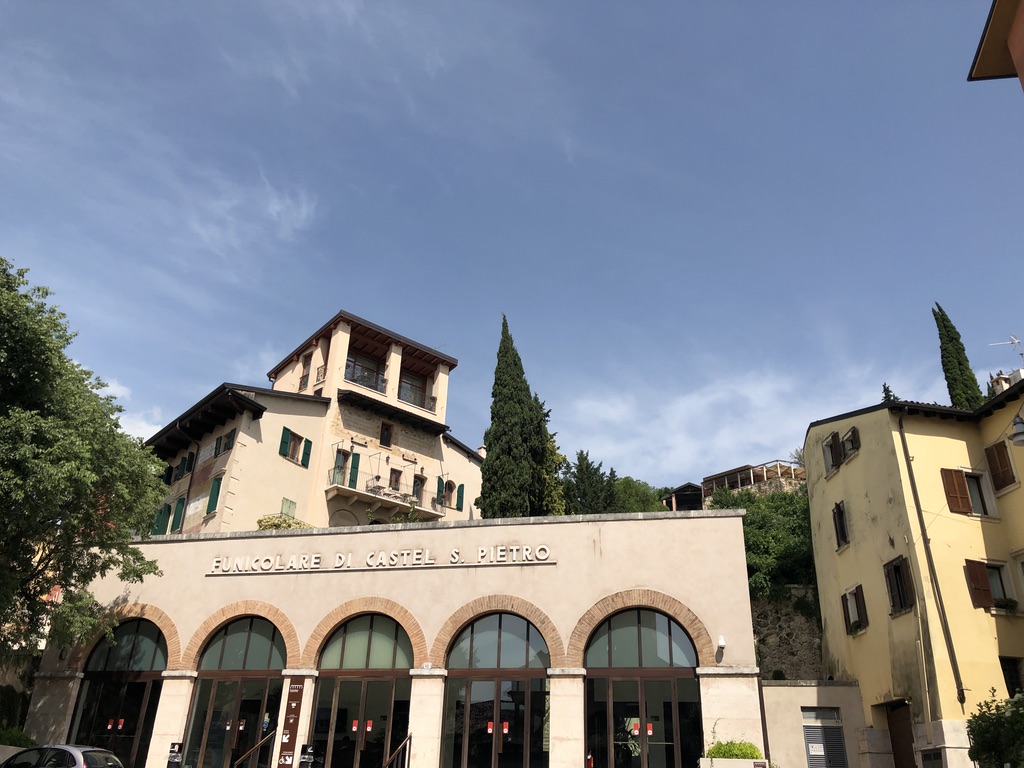
TORRE DEI LAMBERTI
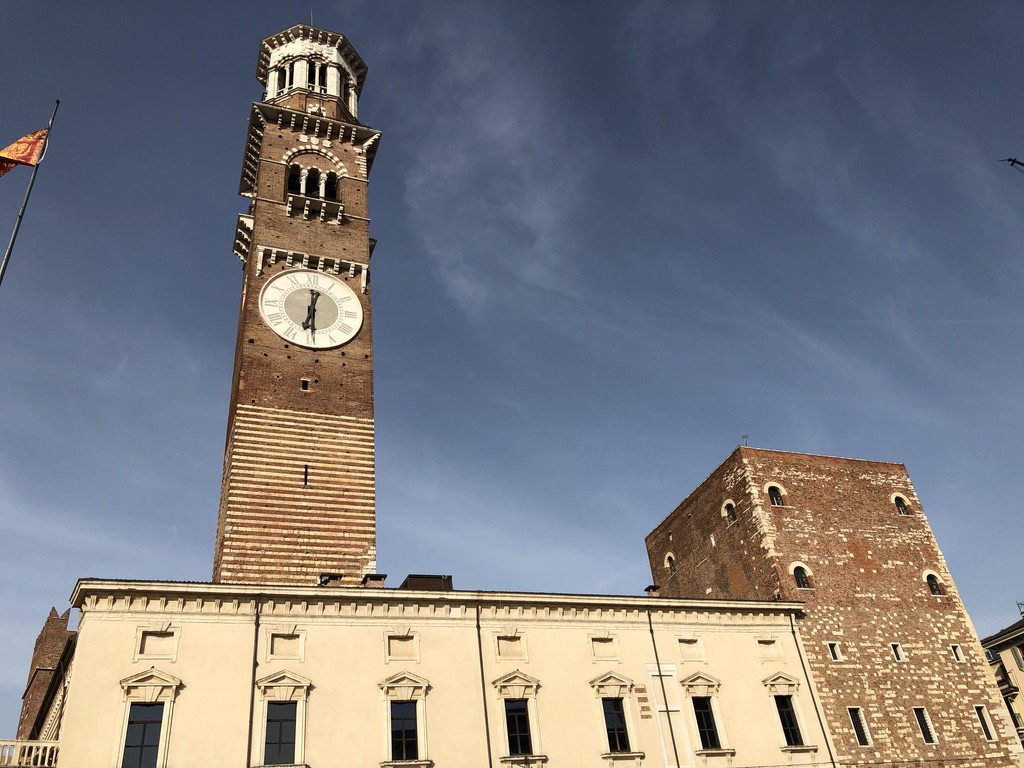
Standing tall above the Piazza delle Erbe in the old city, the Torre dei Lamberti is another one of Verona’s best viewing points.
Reach the top by stairs or elevator (if your legs are not up for it!) for no more than €8. In fact included in that ticket price is also access to the adjacent modern art gallery (which is open Tuesday-Sunday).
Constructed in 1172 but restored during the 15th Century after lighting struck in 1403, the tower’s two bells had different functions historically. One was to ring to call for meetings of the city rulers and another to call for battle. Supposedly. A few modifications took place over the years such as the addition of the clock on its façade.
Ideal for a more close-up view of central Verona from above and on a clear day you can see as far away as the mountains.
FC HELLAS VERONA
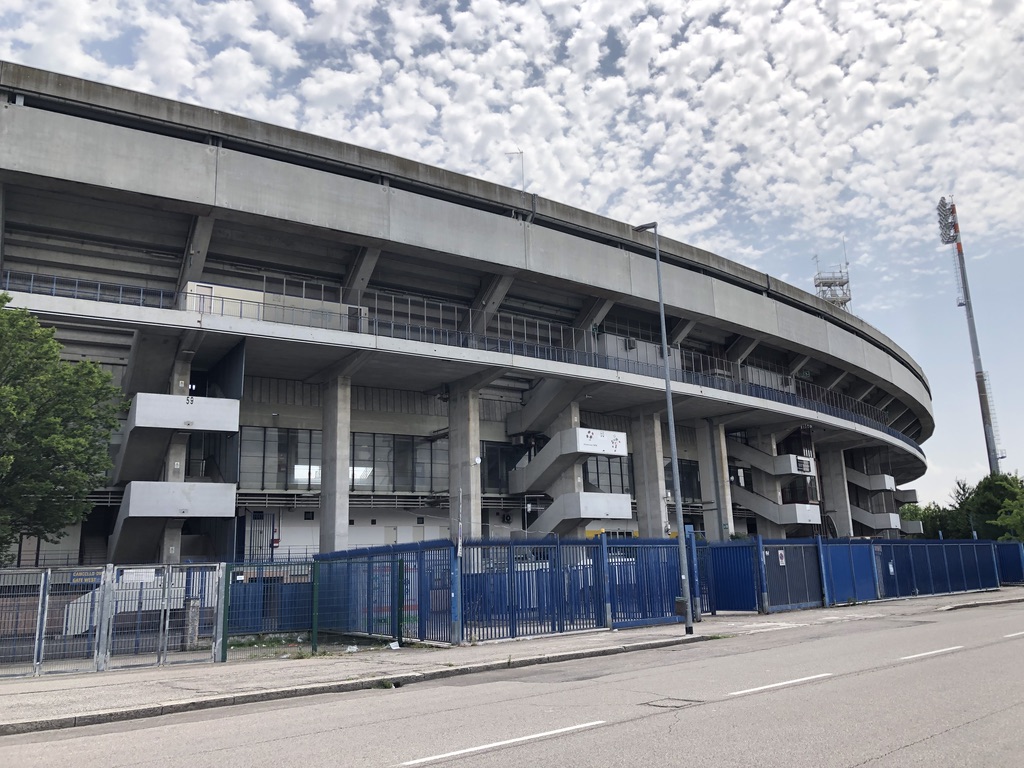
Looking for an Italian football club to support but do not want to be some sickeningly unoriginal Juventus bandwagon jumper? Then perhaps look no further than Hellas Verona as your choice team.
Playing their home matches since 1953 at the Stadio Marc’Antonio Benetgodi, a short distance west of the train station and also 1990 World Cup venue, the Gialloblu (yellow and blue) attract a very loyal support. The 1984/85 Serie A season was their finest moment and the year they were crowned champions of Italy for the only time in their history. A real underdog feat perhaps not matched in European football until Leicester City’s historic 2016 Premier League triumph.
The club have experienced many ups and downs since their 80s heyday and at the time of writing in 2019 have just returned to Serie A one year after relegation. Will they survive and ultimately thrive this time? Here’s hoping!
Tickets for games should be reasonably priced and not too difficult to obtain. Although that may not be the case if the opponents happen to be Juve or either of the Milan or Rome clubs. One thing for sure, whatever the score, you are guaranteed a proper football atmosphere. No fair-weather fans! Also in the city centre at the Hellas Store, get yourself some scarves and other merchandise such as the retro 1985 jersey.
Of course, Hellas Verona are not the only team here. The city’s other team FC Chievo Verona, affectionately nicknamed “The Flying Donkeys” have shared grounds since 1987. Although they may not be as big or as well supported in comparison, they have had some memorable moments since their historic first ever promotion to Serie A in 2001.
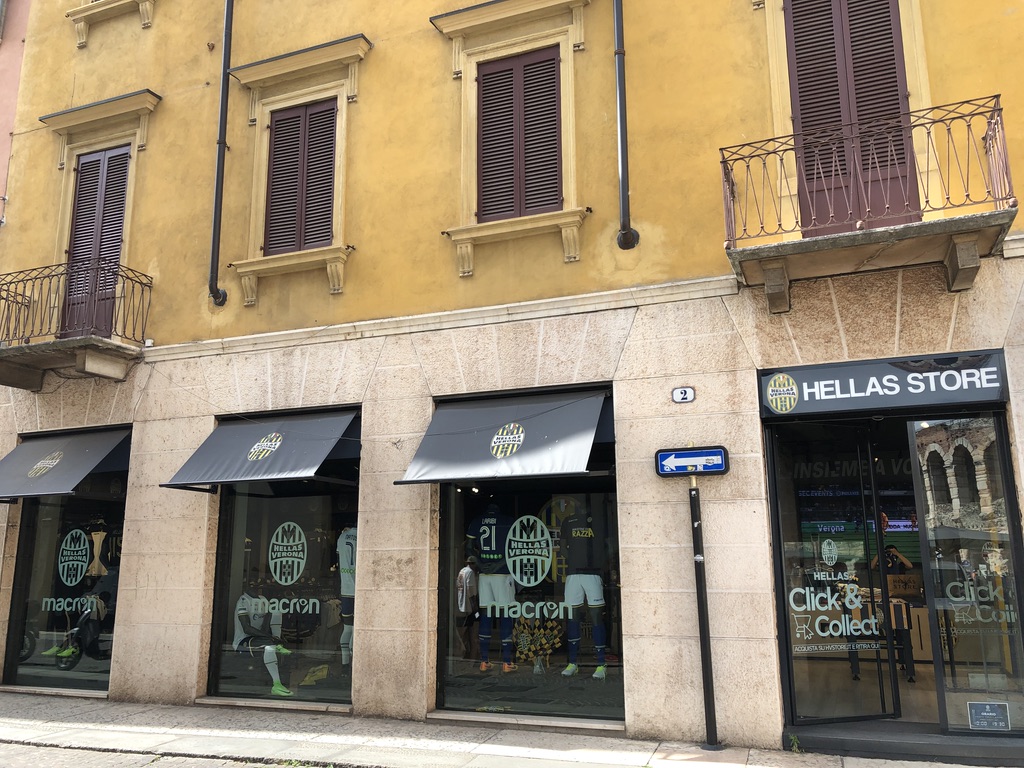
GIARDINO AND PALAZZO GIUSTI
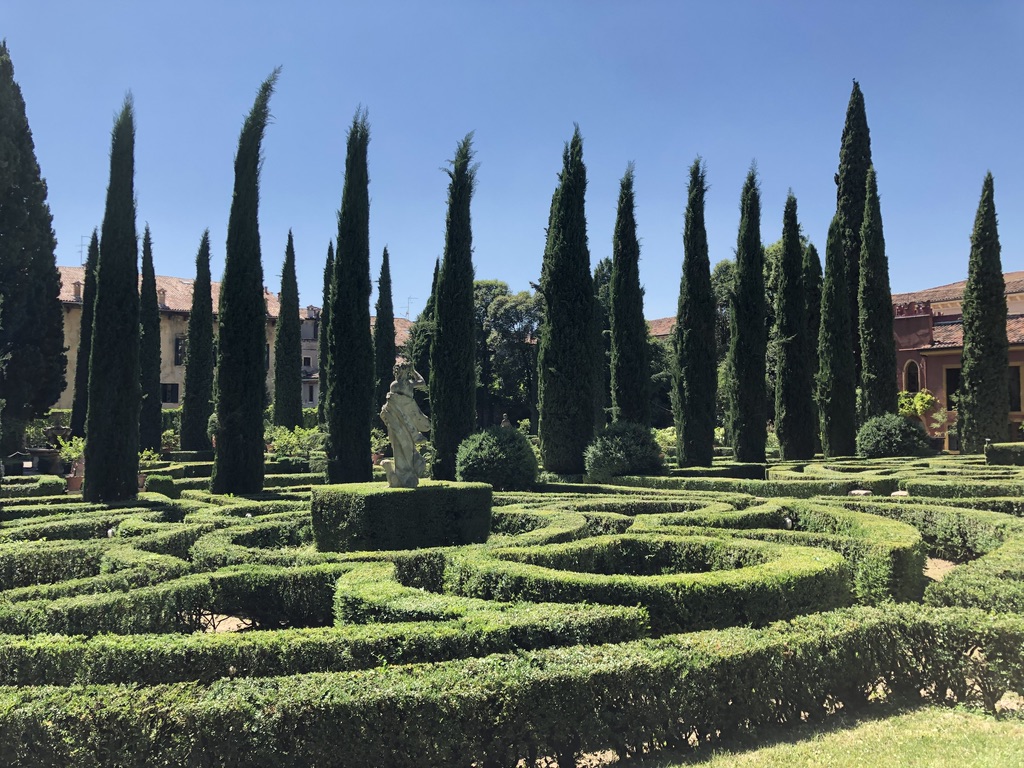
Tucked away behind the back streets northeast of the Ponte Pietra, the Giusti Gardens and Palace are the city’s quiet oasis. The giant cypress trees in the middle around the immaculately trimmed hedges define the garden that became part of the residence of the influential Giusti family.
The Renaissance era influence is very evident here. Neatly symmetrical parterre designs accompanied by statues depicting Roman gods. A layout very much of the time and owing a bit to the Medici Palace just outside Florence. True of other great European post-Renaissance gardens and orangeries such as the Belvedere in Vienna as well. Among the square sections is something of a mini-maze. Definitely a delight for the younger visitors. Or the forever young! To the west of the garden is even its own lemon patch and greenhouse.
Further on is the staircase to the upper level, marked by a strikingly creepy mascaron in the centre. The secret woodland, if you like. Up here another spot for some of the best views of Verona from afar.
By the entrance, visit the inside of the palace for a small fee. This an exhibit in frescoed walls. I see a few palm trees in here as well, which definitely add something exotic to the Renaissance vibe. An unusual contrast? Or were the Giusti’s a bit too gregarious in their tastes?
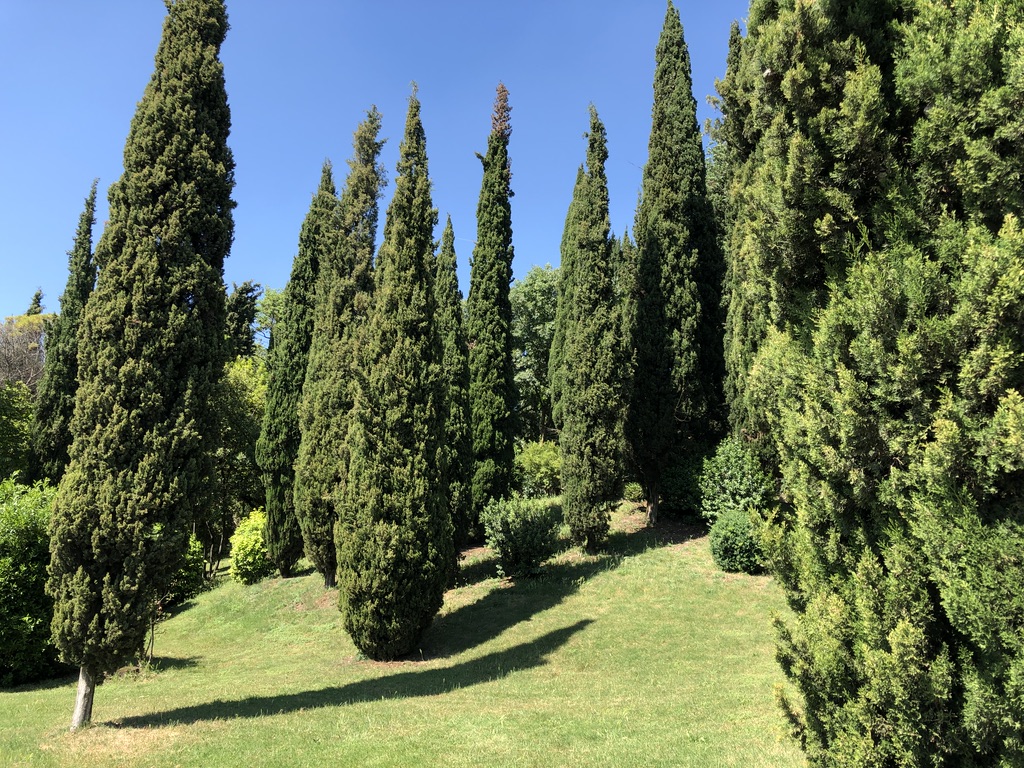
FASHIONABLE VERONA
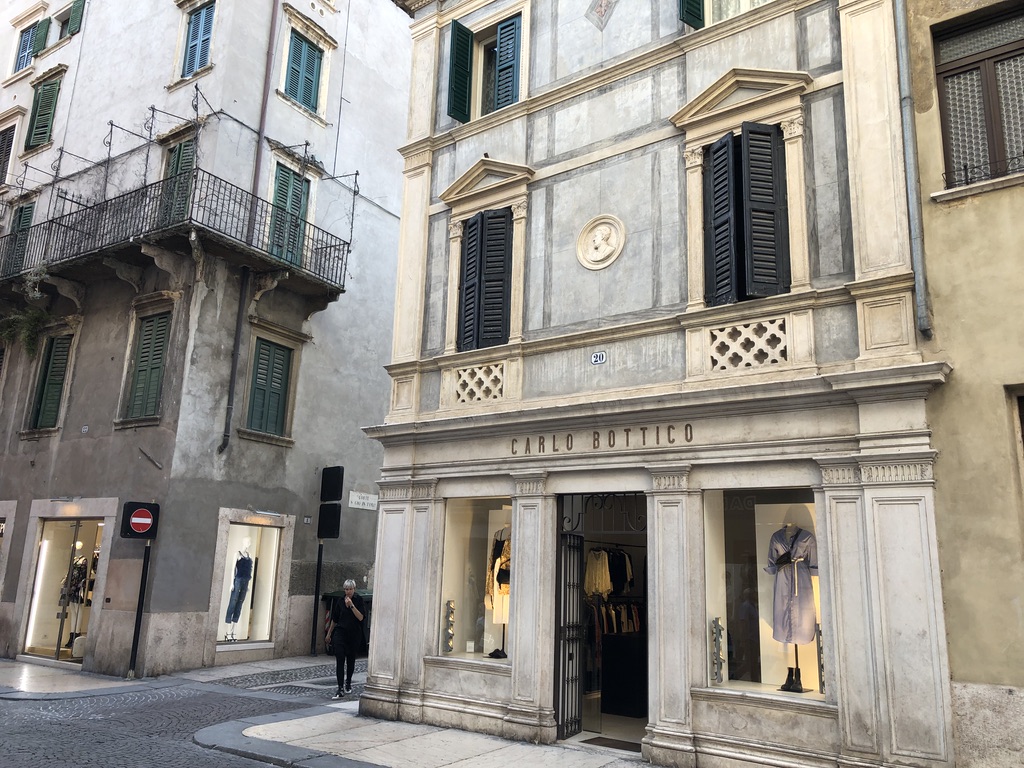
Whilst Milan forever reigns supreme as the leader in world fashion, Verona in some way feels like a bonsai version. Via Mazzini, linking the Piazza Bra with Erbe, is the epicentre of Verona shopping. Your typical high street big names are located here as well as many other continental brands too. You will also see the very high-end names best suited to Beverly Hills or New Bond Street are well represented too. Wahtever your budget, all price ranges are catered to.
Befitting one of Italy’s most affluent areas, around the various side streets you will find plenty of classy boutique stores too. Local and national names that jostle for pedestrian’s attention too. Vintage as well, something for everyone.
Nevertheless, it is not only fashion that will register on the shopping radar here. Other quaint small stores specialising in art and decorations are also part of the hidden gems too.
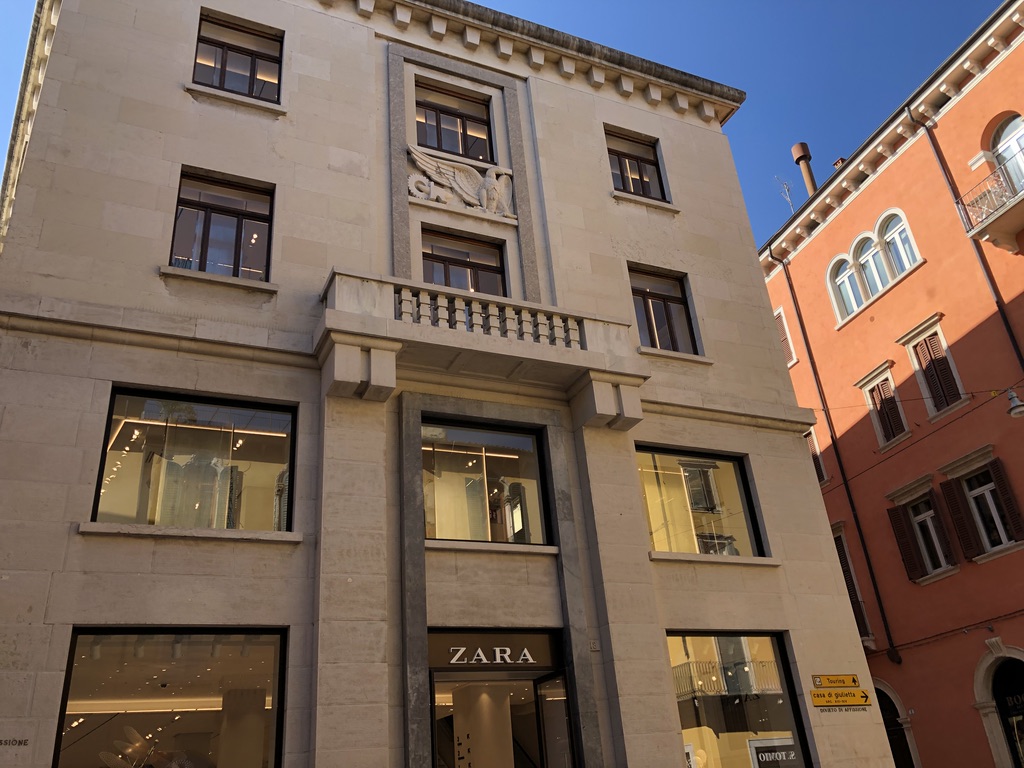
PEOPLE WATCHING IN THE PIAZZAS
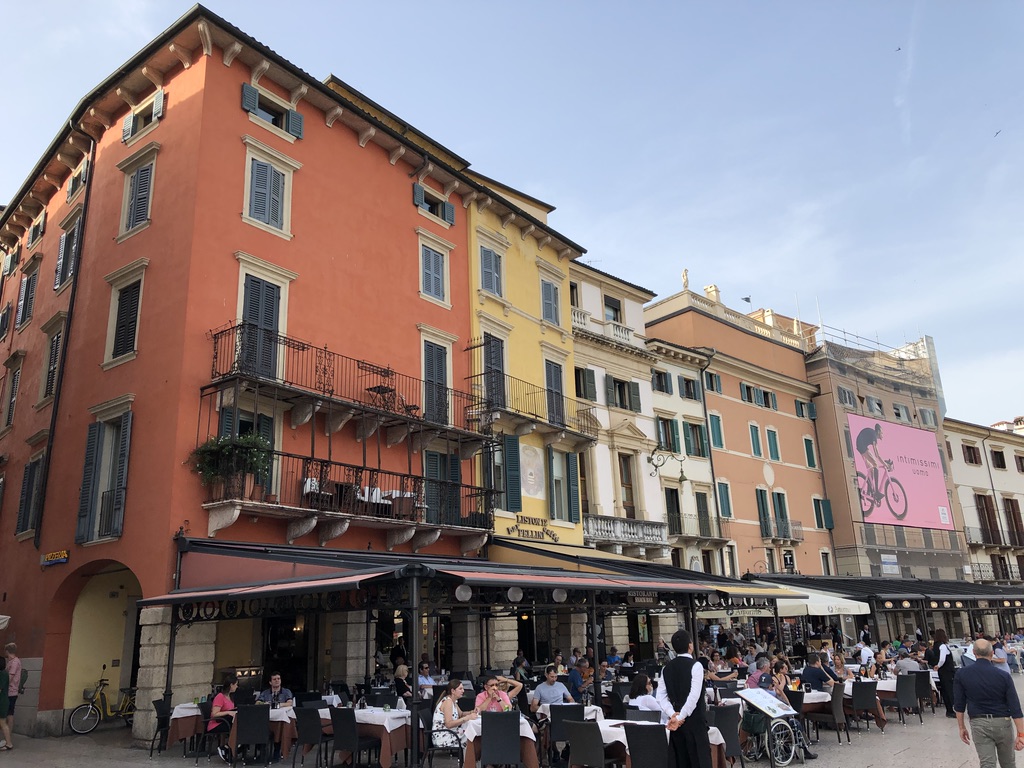
Piazza Bra serves as the epicentre of all things Veronese. Surrounding the Arena and city hall it is a great spot to slow down and chill nonetheless. Al fresco dining under some of the most colourful buildings overlooking the Arena – especially during opera season – couldn’t get more under the skin of the city. This is like the crossroads of Verona, past and present. The place that all roads lead to in the end.
Piazza delle Erbe in the centre of the historic city represents another great intersection. The giant Torre di Lamberti rises above all like a giant monolith of power rising high above the painted walls of the Mazzanti houses. Translating as “Market Square”, the nearby buildings and structures do hint at its mercantile status in historic times. The intricate mullion windows of the Casa dei Mercanti adjacent are another typical example of the type of building.
Behind this is the Piazza dei Signori. A smaller piazza but significant nonetheless and nearby the location of the Scaliger Tombs. These, a series of statues and tombs commemorating the lives of the Scala dynasty of Verona.
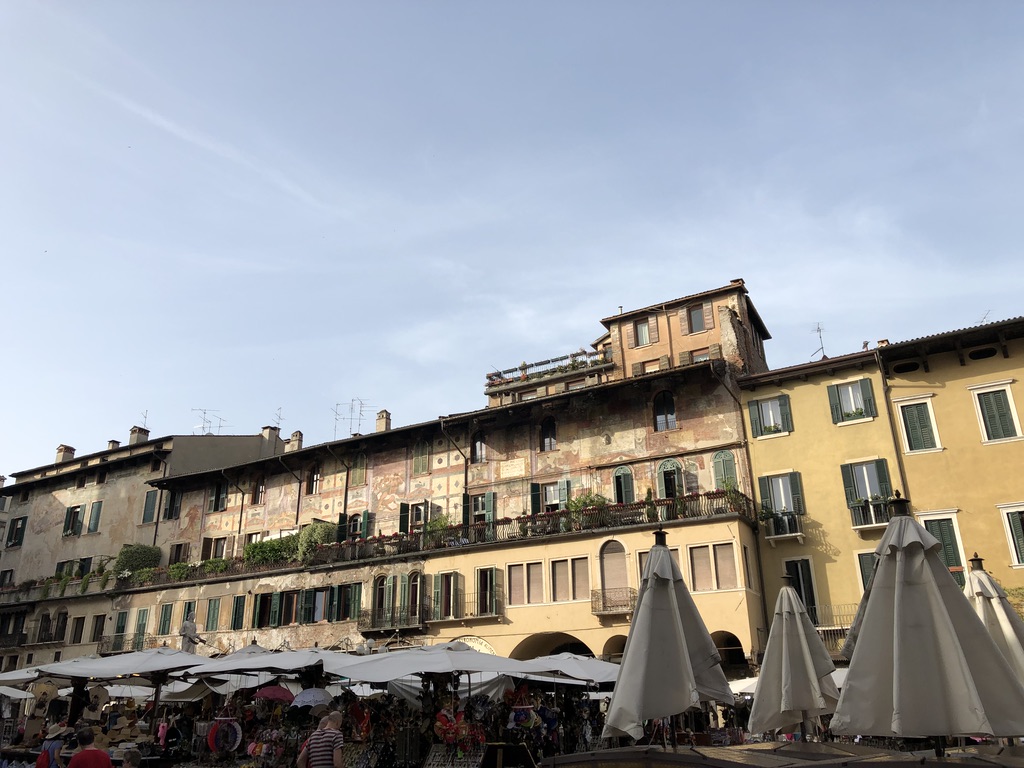
GELATO TIME
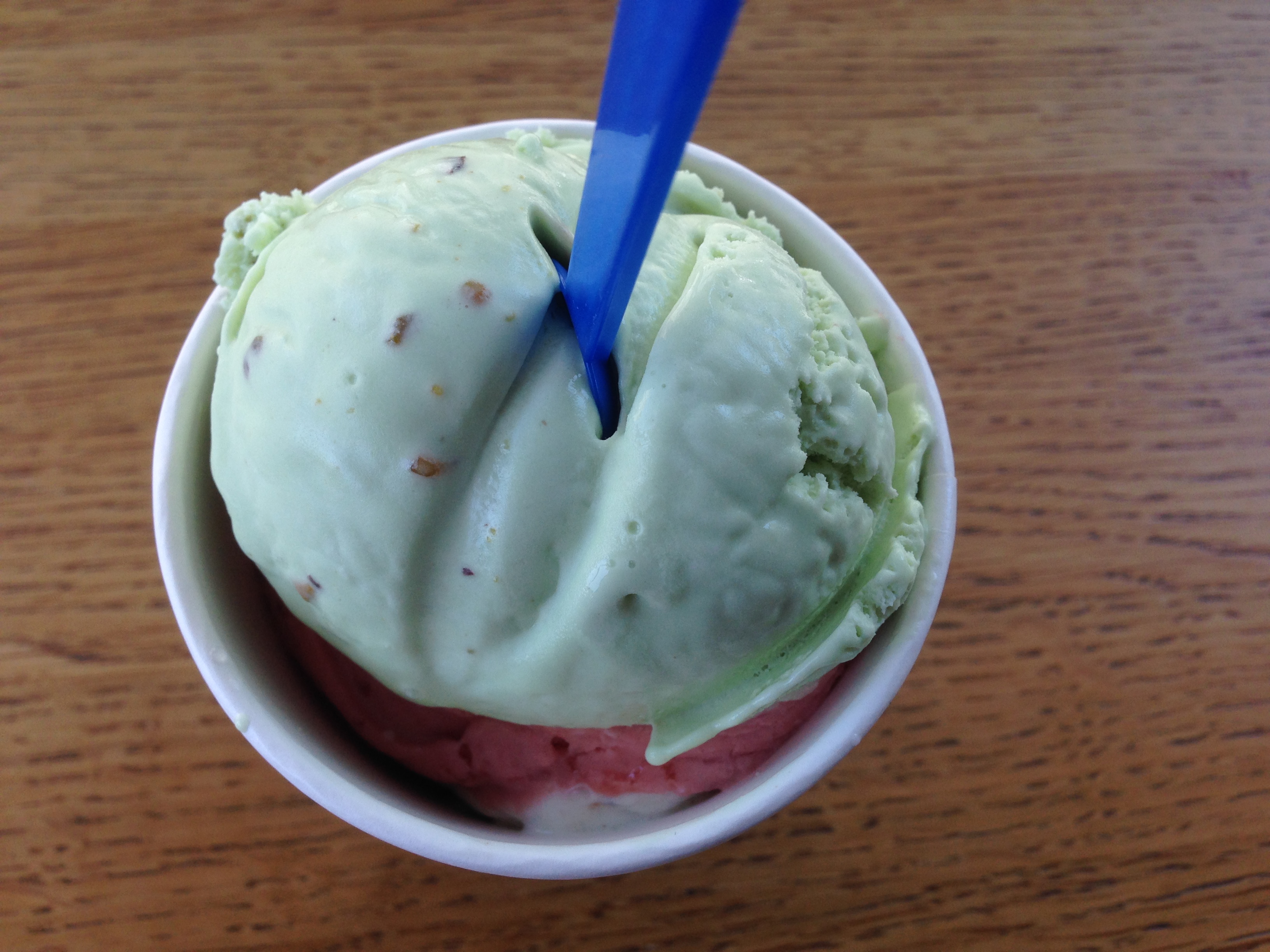
Italy. Summertime. Hot weather. That calls for copious amounts of one thing. Gelato, and loads of it! Trust me you will find an ice cream place to cool off on almost literally every street. Every flavour under the sun, too. Lower in fat than your standard ice cream so no need to worry about piling on the pounds! Although there is the rick of that ice cream overdose splitting headache but that goes for anyone who overindulges.
Four scoops not exceeding €5? Yes, look around and it is a viable option in fair Verona. “Italians Do It Better” proclaimed a T-shirt famously worn by Madonna in a music video once. Any things in particular? I can certainly not hesitate to put ice cream on that list!
You still interested in one particular small corner of Verona then?
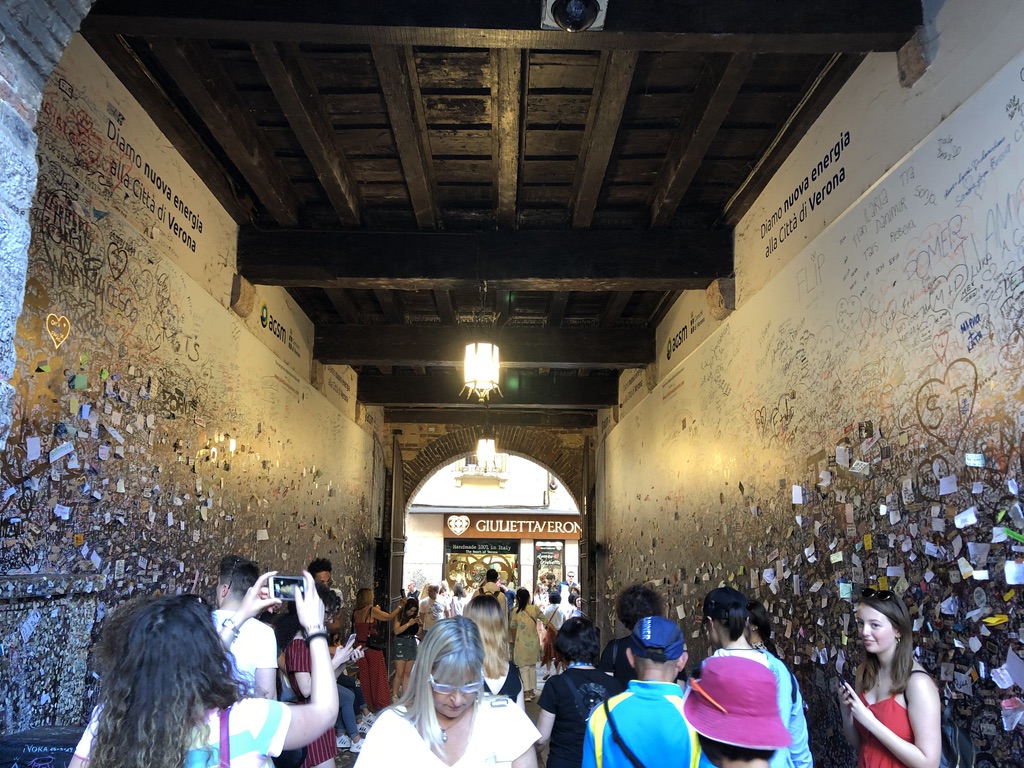
Have you been to Verona before? Or are you planning on visiting? Do you agree with this list? Is there anything else I missed? Tell us in the comments below.